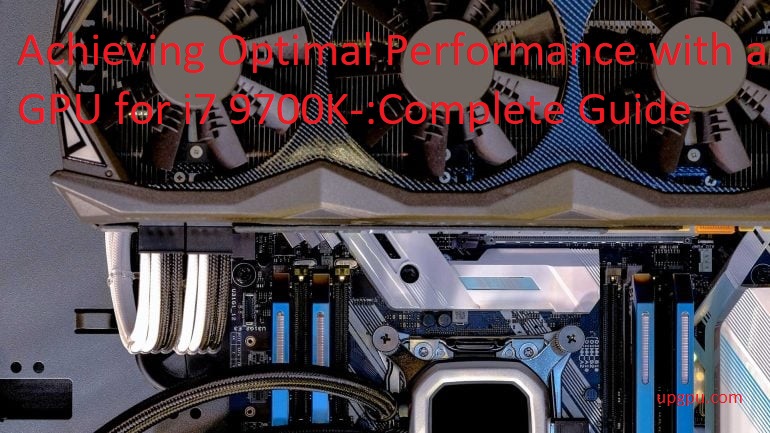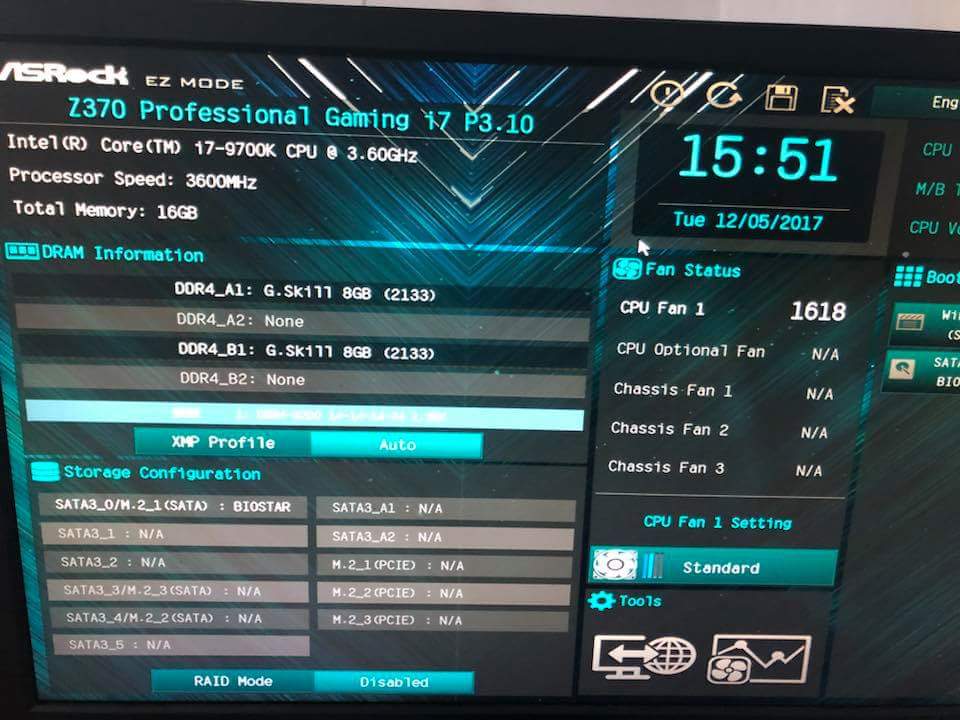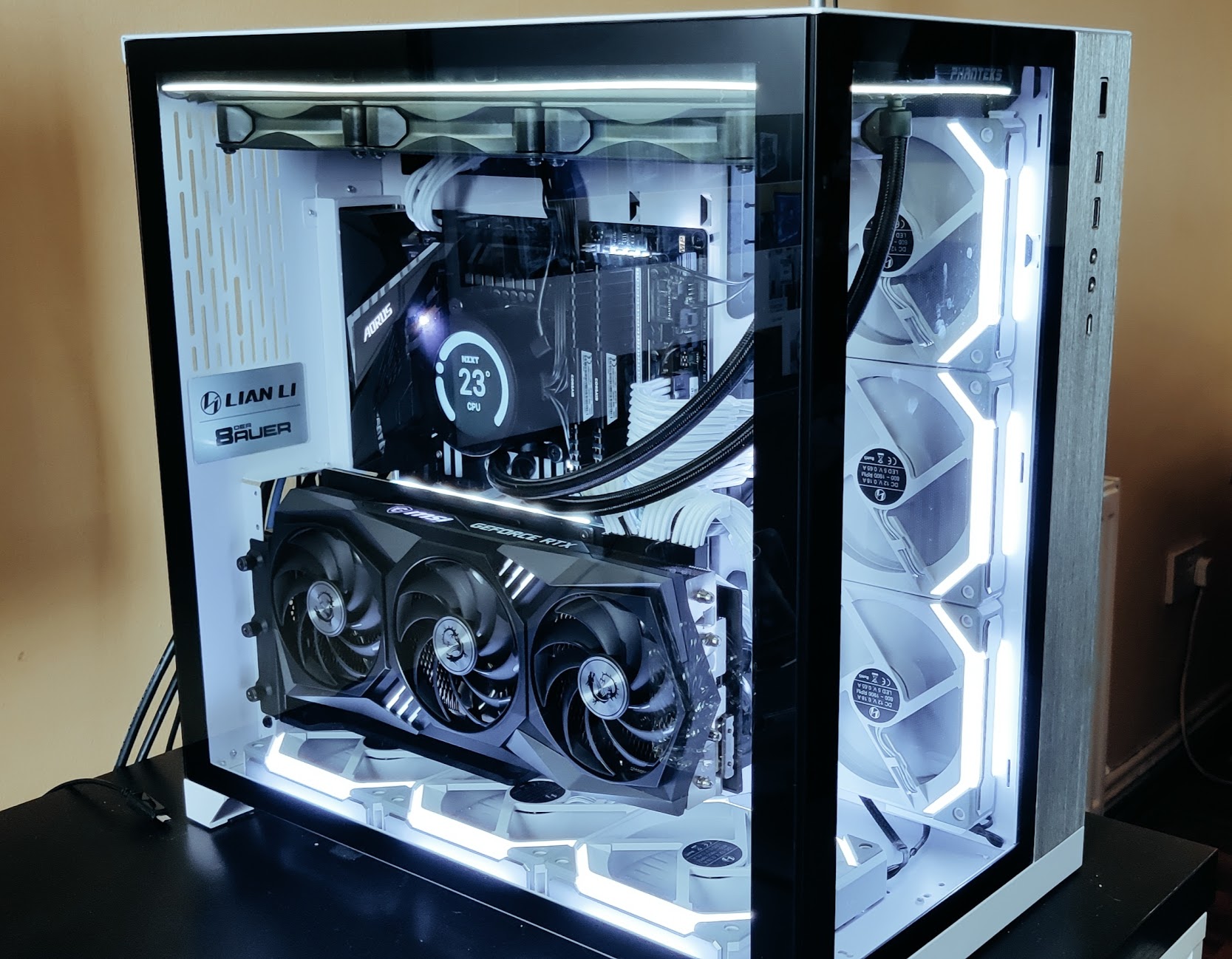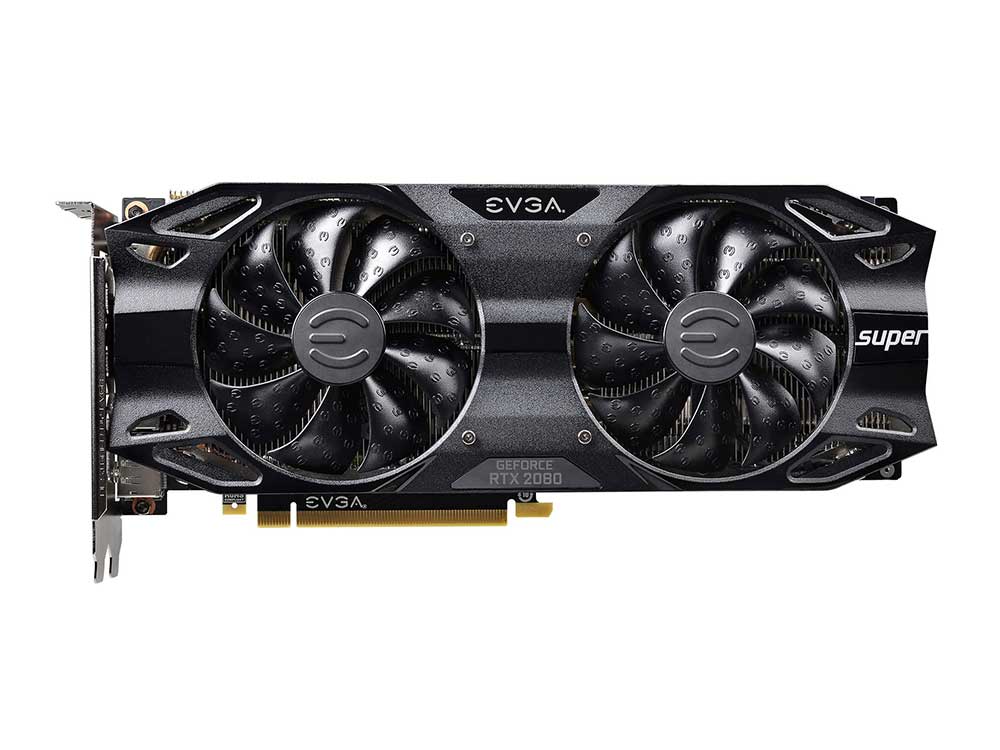Are you looking for ways to boost your i7 9700K performance? Read on to know how a GPU can help you optimize system performance and maximize outcome.
With a few simple steps, you can enjoy excellent speed and quality from your processor.
The Intel Core i7 9700K is a powerful desktop processor with eight cores and sixteen threads. When it comes to achieving optimal performance, many users look to a dedicated GPU for added power. This guide will cover the basics of choosing a GPU, as well as optimization tips that will ensure you’re getting the most out of your setup. We’ll also explain how you can use the integrated graphics on your Intel processor if necessary. Let’s get started!
We’ll start with an overview of different kinds of GPUs available on the market today:
- NVIDIA GeForce series GPUs: These are some of the most popular GPUs today and can be found in many gaming laptops and desktops. These come in very small form factors, like in entry-level mainstream notebooks, or they can even be up to full-size cards with larger cooling solutions as seen in high-end gaming rigs and professionals systems.
- AMD Radeon RX Series GPUs: If you’re looking for more budget-friendly options, AMD’s line of Radeon graphic cards could be exactly what you’re looking for. These offer great performance at an affordable price point. They are best suited for HD gaming and casual Virtual Reality (VR) experiences alike!
- NVIDIA Quadro Series Workstation cards: If you intend to use your system mainly for creative purposes – such as 3D modeling or video editing – then these would be ideal for you! They offer superior rendering capabilities compared to GeForce or Radeon cards at an overall higher cost though.
We’ll also break down how you should select the right GPU according to your needs, considering both performance specifications and price range. We’ll go over trends that make certain GPUs better fits than others depending on your budget and preferences while also going into more detail on what specific details you should pay attention to before investing in any graphics card — so keep reading!

Brief overview of the topic
Graphics processing units (GPUs) are essential components for any gaming or computer performance enthusiast. Their purpose is to process graphical data for display on different types of computer displays, ranging from basic monitors to more advanced virtual reality headsets. The quality of the graphics that are produced can have a significant impact on the performance of a gaming system, so ensuring that you select an appropriate GPU is essential in order to achieve optimal performance.
In this guide, we will cover everything related to GPUs and their compatibility with the Intel Core i7 9700K series CPUs. We will discuss the different types of GPUs available, including their capabilities and features, as well as which ones work best when paired with this processor series. Furthermore, we will provide instructions on how to install and configure your GPU alongside the hardware of your Intel i7 9700K system correctly.
With these considerations in mind, you should be able to create an optimal gaming experience using your i7 9700K CPU and suitable GPU combination.
Importance of optimizing GPU performance for i7 9700K
Optimizing your GPU performance is essential in order to achieve the maximum output and allow you to produce high-quality content. This guide provides a comprehensive overview of how to get the most out of GPU performance with Intel’s i7 9700K processor.
There are multiple components to consider when attempting to maximize your GPU performance, such as hardware selection, driver installation, and overclocking settings. Having an understanding of how each component works will help you achieve optimal performance with your i7 9700K processor.
Hardware Selection: Choosing the right hardware for optimal GPU performance is essential in getting the most out of your CPU. Factors like type of components, number of cores, clock speed, memory capacity and cooling system all contribute to the overall success or failure of the system in reaching peak performance levels. Additionally, having a good power supply with sufficient wattage is key, as underpowering can cause a range of issues that prevent optimal output from being realized.
Driver Installation: Installing drivers correctly is another important aspect when looking to achieve peak GPU performance within an i7 9700K setup. Installing drivers helps manage interaction between hardware components and ensures that software programs are able run on top of it efficiently without any compatibility issues. Drivers can be downloaded directly from manufacturer websites or use automated software that does this for you.
Overclocking Settings: When configured correctly, overclocking settings can boost single-threaded applications significantly but should be done with caution due to potential instability or damage it may cause if done improperly or exceeding recommended values for your setup model or components involved. Always research potential overclocks you plan on doing before making any adjustments by utilizing resources such as forums and manufacturer websites which offer guidance on setting up overclocks specifically catered to certain setups usually based on temperature readings during attempts at overclocking settings exceeding rated values on CPU model/graphics card model etc.
Understanding i7 9700K

The Intel Core i7-9700K is a desktop processor released by Intel in mid-2018. It is part of the 9th generation of Core processors, which were released with minor updates from the 8th generation Coffee Lake CPUs. It has eight cores and eight threads, a base frequency of 3.60GHz, up to 4.90GHz turbo frequency and 12MB cache memory. The i7-9700K has an unlocked multiplier for overclocking, so it can be pushed further than its default speed to increase performance in gaming and other heavy applications.
The processor also supports Intel’s Hyper-Threading Technology (HTT), allowing for twice as many threads to be processed for increased performance in multi-threaded tasks such as video encoding or 3D rendering. Additionally, the processor contains integrated graphics with Intel UHD 630 support which allows it to work with integrated graphics cards while still delivering good performance in games at lower resolutions on a budget PC build.
This processor fits socket 1151 motherboards which run on DDR4 RAM at speeds up to 2666MHz and are compatible with 6th/7th/8th gen CPUs as well as 9th gen CPUs. The best pairing for this processor would be a more recent Z370 chipset motherboard that has more features compared to previous generations such as support for higher speeds RAM and additional overclocking options due to the presence of certain new technologies like Thunderbolt 3 and USB 3.1 Gen2 ports, among others. While running applications that do not benefit from these new technologies or those that take advantage of multiple cores running well above their standard operating clocks (such as video editing software or games) then pairing with an older 270 motherboard may suffice for just about everyone else; however, if you’re looking for extra performance then it may be worth spending extra money on newer motherboards based on the 300 series or 400 series chipsets from Intel.
Alongside motherboards, it is beneficial to use GPUs when moving toward higher resolution gaming performance due to their ability to process massive amounts of data at once due largely in part due to several compute units and stream processors included within them depending on their price point; however, it is important select GPUs that are compatible with the particular model CPU such an i7 9700K because specific models have been designed alongside specific generations since every manufacturer has their own architecture, so Intel’s specific architecture requires varying amounts of processing power according to particular features found within its products.
Features and specifications of i7 9700K
The 9th Generation Intel Core i7-9700K processor boasts eight cores with each core running at base speed of 3.6GHz and can reach up to 4.9GHz maximum when utilized on Intel Turbo Boost Technology 2.0. It has a total cache memory of 12MB, which is split into 8MB L3 Cache Memory bases on Intel’s Smart Cache Technology.
For further optimization¸ the processor supports advanced technologies such as the Intel Hyper-Threading Technology, Intel SpeedStep Technology, Enhanced Intel SpeedStep Technology and dual-channel DDR4 memory technology for smoother data flow performance and higher gaming fidelity. In addition, it incorporates features such as AES New instructions for encryption/decryption acceleration and Intel Adaptive Thermal Monitor 2 technology for automatic thermal monitoring of the CPU temperature, voltage and frequency levels to ensure optimal performance at all times.
Finally, the processor comes with an integrated graphics core from the Gen 9 GPU family that supports 2D/3D applications including DirectX 12 and OpenCL 1 .2+ support delivering enhanced viewing experiences to its users whether for gaming or use that requires intense graphical functions.
How it affects GPU performance

A Graphics Processing Unit (GPU) is a key component of any gaming computer. It affects frame rate, the maximum resolution of games and visuals, load times and more. Therefore, it’s important to understand how best to optimize and configure your GPU for optimal performance before making a purchase or upgrade so that you can get the most bang for your buck.
Generally, GPUs are categorized in two ways: by brand name and by graphics processing type. The type of GPU impacts how efficiently it processes graphics data as well as its overall performance across different scenarios. For example, a consumer-level card with general-purpose instructions performs better while playing one type of game over another which would require specialized instructions to be properly processed. This level of customization is especially important when considering how it affects GPU performance with an Intel Core i7 9700K processor, as this processor can support up to 64GB RAM and features exceptional multi-threading capabilities when combined with the right hardware components.
There are also a few technical considerations to keep in mind that affect GPU performance when paired with an Intel Core i7 9700K processor:
- Clock speed: Higher clock speeds result in more GPU power which leads to faster load times, increased frames per second (FPS), and lower latency when gaming or editing video.
- Bus interface width: Most GPUs use either PCI Express 3.0 x16 or PCI Express 4.0 x16 bus interfaces for data transfer between components typically at 8GB/s or 16GB/s respectively; however these numbers can vary depending on make/model of your components.
- Memory size & type: The larger the available memory capacity on the card, the better it is able handle texture maps while gaming which further reduces loading times and increases overall speed/performance while gaming or streaming/editing video content from PC’s internal storage devices such as Hard Disk Drives (HDD). Additionally, GDDR6 memory types often provide higher levels of efficiency than other varieties such as DDR4 for certain tasks like streaming video content from PC’s internal storage devices using applications like OBS Studio etc…
With all factors in consideration selecting the right GPU model is vital for achieving maximum performance with an Intel Core i7 9700K processor whether it’s used for gaming or general computing tasks like graphics editing & rendering images/videos etc.
Understanding GPUs
In order to maximize the performance of a GPU, it’s important to understand how one works. GPUs are special-purpose processors that work together with the CPU in a computer system to render high-resolution images and videos on the computer’s display. As it processes video and graphic commands from the CPU, a GPU breaks down tasks into smaller steps and executes them in parallel which improves overall computing performance.
The two main components of the GPU are its processor or core, and its memory or RAM.
The processor core is responsible for carrying out various functions such as performing calculations, manipulating data from an application program, storing and retrieving data from memory, and delivering results back to the application program. This is where most of the processing power of a GPU comes from.
The memory chip outputs data as quickly as possible while consuming as little power as possible so that you won’t drain your battery too quickly when using your laptop with a dedicated graphics card installed; this also helps reduce background noise caused by fans. It also stores graphical frames wherein if there are more frames than can be held by one chip then it can access data stored in other chips to speed up rendering time which increases overall speed and efficiency of the GPU. With modern GPUs having several memory systems built in support multiple sources giving element controlling data and topographic images simultaneously – rarely needing additional storage devices for these specific tasks when working with modern applications.
Different types of GPUs

Graphics cards, also known as GPUs, are integral components for any computer. They have become more and more advanced over time, allowing for increasingly complex and realistic gaming experiences. When selecting a GPU for your i7 9700K processor, there are several main types to choose from: integrated graphics, mid-range graphics cards, and high-end graphics cards. Each type of GPU provides its own benefits and limitations that must be taken into consideration before you make a purchase.
Integrated Graphics: Integrated GPUs are typically found in laptops or low-cost desktop systems. While they won’t provide enough performance for any serious gaming, they will offer adequate performance for most applications while saving on power consumption due to their lower power requirements compared to dedicated GPUs. This makes them ideal if you’re looking for a balance between cost and quality.
Mid-Range Graphics Cards: Mid-range graphics cards are designed to provide better performance than integrated GPUs without breaking the bank price wise. These cards still require some power to run but typically won’t consume as much as high-end graphics cards in the same class when idling or operating at reduced clock speeds during lighter operations like web browsing or office tasks. However, they aren’t quite capable of running modern games at acceptable frame rates on ultra settings.
High-End Graphics Cards: High-end graphics cards provide greater performance than their mid-range counterparts but with an increased energy requirement and higher cost associated with them overall. They tend to be able to run the latest titles at very high settings even on 4K displays if opted for an appropriate option therewith great deal more power consumption than dedicated graphics card that belong to the previous two categories stated above.
Importance of selecting the right GPU for i7 9700K
When selecting a GPU for an i7 9700K, there are several factors to consider. The most important factor is the overall performance of the GPU, as this will impact the gaming experience and other tasks such as streaming and video editing. Performance is largely determined by the type of graphics card, its clock speed, and its memory size.
Additionally, the power consumption of a GPU should be taken into account when selecting a card to pair with an i7 9700K processor. This is because more power hungry GPUs will place a greater strain on your PC’s power supply, ultimately increasing electricity bills and possibly causing other components to overheat if it is not properly ventilated.
Other features such as SLI compatibility should also be considered when pairing an i7 9700K processor with a GPU in order to maximize its potential. SLI allows users to join two or more GPUs together in tandem in order to double or even quadruple its performance capabilities – allowing for higher fidelity gaming experiences or smoother on-line streaming sessions with multiple displays connected at once.
Tips for Better GPU Performance
To ensure your GPU works at its maximum potential, there are several optimization tips you should consider.
Firstly, make sure that your GPU drivers are up to date so you can take advantage of the latest features and optimizations.
Secondly, if you’re using a laptop, try to optimize the fan control system and increase ventilation to help lower temperatures and improve GPU performance.
You may also want to adjust graphical settings in your games or other applications so that they don’t require too much power from the GPU.
Finally, consider overclocking your GPU in order to get more processing power out of it. This is not for beginner users as it requires knowledge about hardware and should be done carefully. If done correctly though it can provide excellent results in terms of performance gains.
Keeping the GPU cool
In order to get the best performance from a GPU, it is important to keep it cool. Without adequate cooling, your GPU may not be able to handle intense workloads. The most common type of cooling system for a GPU is air or liquid based.
Air-cooling systems typically employ heat sinks and fans to dissipate heat from the processor. Heat pipes guide takes away the heat from critical areas like the VRMs and transfer it to large aluminum radiators which are connected by copper/aluminum rods and copper pipes. Finally, either an axial fan or a blower fan works in conjunction with these components, actively drawing air across the radiator(s) to keep your system thermally balanced throughout its use.
If this type of system isn’t sufficient though, you can also opt for watercooling systems instead. This involves circulating liquid through tubing and pumps with integrated radiators that take in warm liquid at one end of the cycle and expel cooler liquid out at the other end – all with minimal noise! Waterblocks are used to directly affix your CPU’s integrated heatsinks onto them for a direct contact surface that helps facilitate efficient heat transfer away from your processor into the loop for cooler operation overall. Various configurations of pumps, radiators and reservoirs can also be implemented depending on how overclocked/stressed out your processor gets during use – allowing you even greater control over its thermal behavior whilst operating under load conditions!
Proper cable management
Cable management is an important part of system building and can have a big impact on the performance of your system. An unorganized, cluttered cabling setup can limit the airflow inside your case and possibly create hot spots that would reduce the longevity and reliability of components in your system. Making sure that all the cables in your case are properly routed ensures that the components within your case are operating at their maximum potential.
When it comes to GPU cables, setting up cable management is even more important. A GPU usually requires up to 4 or 5 separate plugs, which must be connected in order for it to power up correctly: PCIe power connectors (6- or 8-pin), HDMI/DisplayPort/DVI-D outputs, and USB ports. When installing a GPU into a PC build or replacing an existing one, it’s always best practice to make sure everything is properly connected before turning on the computer.
If you aren’t familiar with proper cable management techniques, there are plenty of online guides available for free to help get you started in properly managing your cabling setup. Utilizing such resources can go a long way towards ensuring that your computer runs as smoothly as possible over years of use. Taking some time beforehand for proper cable management will also save time down the line if you ever need to work on something in your build – no more dreadful hours spent untangling cords!
Conclusion
In conclusion, the Intel i7 9700K is a powerful processor that can be significantly supplemented by dedicated graphical card(s) for any high-performance multimedia or graphical tasks. For users who are looking for maximum performance and/or stability, multiple GPUs should be considered for their setup. Depending on the task, though highly task dependent, SLI/CrossFire solutions can lead to increased performance and stability from within a single product line. Similarly, different GPU families may achieve different levels of compatibility and performance depending on the make and model.
Cross-vendor solutions may introduce problems in terms of compatibility and driver support. Therefore, benchmarking across GPU types should be strongly taken into consideration when choosing a graphics card for your system. Setting up separate GPUs for different tasks is also an approach that should be taken into consideration as it will help to maximize system performance on any given application or task with minimum overhead in terms of additional system requirements such as power or cooling resources. Keeping an open mind with regards to which GPU may suit your needs best is essential in order to ensure that you optimize your hardware spend as much as possible.
FAQs
What GPU should I use with a i7-9700K?
You can use a high-end GPU like the NVIDIA RTX 3080 or AMD Radeon RX 6800 XT with an i7-9700K. However, the specific GPU you should use depends on your budget, use case, and other hardware components.
Does i7-9700K need a graphics card?
Yes, the i7-9700K does not have an integrated GPU, so it requires a dedicated graphics card to display graphics on a monitor.
Is a i7-9700K with a RTX 3070 a good combo?
Yes, the i7-9700K is a powerful CPU, and the RTX 3070 is a high-end GPU, so they make a good combo for gaming and other resource-intensive tasks.
Is i7-9700K good with GTX 1660 Ti?
Yes, the i7-9700K is a powerful CPU, and the GTX 1660 Ti is a mid-range GPU, so they make a good combo for gaming and other tasks that don’t require the highest graphics settings.
Can i7-9700K run RTX 3080?
Yes, the i7-9700K can run the RTX 3080, but it may not reach its full potential due to potential bottlenecking in certain games or applications.
Is RTX 3060 good with i7-9700K?
Yes, the i7-9700K is a powerful CPU, and the RTX 3060 is a mid-range GPU, so they make a good combo for gaming and other tasks that don’t require the highest graphics settings.
Is i7-9700K high-end?
Yes, the i7-9700K is a high-end CPU, and it is suitable for demanding tasks such as gaming, video editing, and other resource-intensive applications.
How much RAM is recommended for an i7 9700K?
The amount of RAM recommended for an i7-9700K depends on your use case. For most gaming and general use, 16GB of RAM is sufficient. However, for more demanding applications like video editing or 3D rendering, 32GB or more may be necessary.
Is an i7 9700K compatible with GTX 1650?
Yes, the i7-9700K is compatible with the GTX 1650, and they make a good combo for budget gaming builds.
Will an i7-9700K bottleneck a RTX 3070?
It depends on the game or application being used. In some cases, the i7-9700K may bottleneck the RTX 3070, but in others, it may not. Overall, it is still a good combo for gaming and other resource-intensive tasks.
See More
- Best cpu gpu combo for 1440p 144hz 2023
- Best gpu cooler 2023
- Best gpu risers 2023
- Best GPU for 1080p 144Hz 2023
- Best GPU for 1440p 144Hz 2023

